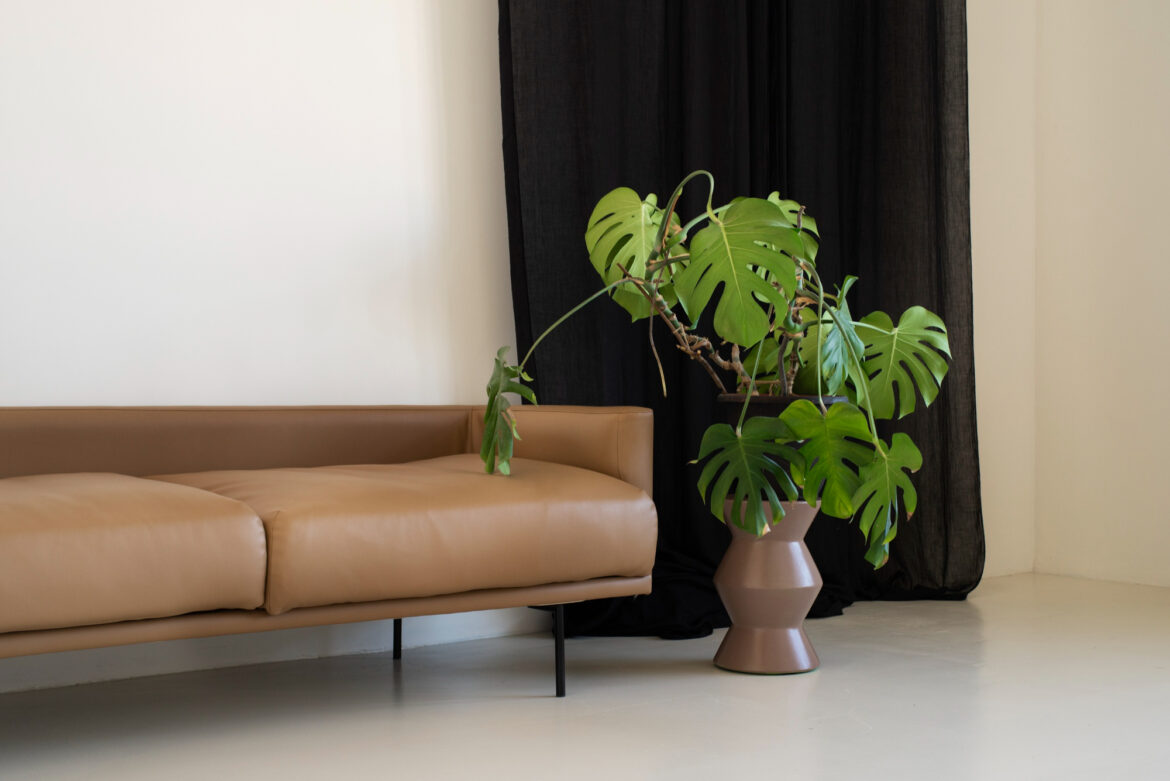Indoor plants are a fantastic way to bring nature inside your home, add a touch of greenery, and purify the air. However, not every house or apartment has the luxury of bright, natural sunlight streaming through large windows. If your home is a bit darker or you don’t get direct sunlight, don’t worry—you can still grow beautiful indoor plants that thrive in low-light conditions!
In this article, we’ll explore nine easy-to-care-for indoor plants that can flourish in low-light environments. These plants are not only easy to maintain but also add aesthetic value to your home. We’ll go through each plant’s key features, care tips, and benefits, so you can choose the right one for your space.
Table of Contents
ToggleBenefits of Low-Light Indoor Plants
Before diving into the specific plants, let’s discuss why low-light indoor plants are a great addition to your home:
1. Air Purification
Many low-light plants are excellent at purifying indoor air by removing toxins like formaldehyde and benzene. This can help improve the overall air quality in your home.
2. Stress Reduction
Having plants in your living space has been shown to reduce stress, boost mood, and promote a sense of calm. They can make your home feel more relaxing and inviting.
3. Low Maintenance
Most low-light plants require minimal care, making them perfect for busy individuals or those new to plant care. They generally don’t need frequent watering or attention.
4. Versatility
Low-light plants can thrive in various indoor conditions, including bathrooms, bedrooms, and offices. This versatility makes them suitable for almost any room in your home.
For more information on the benefits of indoor plants, check out Healthline’s guide.
9 Easy Low-Light Indoor Plants
Following are the 9easy low-light indoor plants you can grow inside:
Also Read:
1. Snake Plant (Sansevieria trifasciata)
Key Features:
- Light Needs: Low to moderate light.
- Watering: Allow the soil to dry out completely between waterings.
- Size: Typically grows 1-3 feet tall.
The snake plant, also known as “Mother-in-Law’s Tongue,” is one of the most resilient houseplants. It can withstand neglect and thrives in low-light conditions, making it a perfect choice for beginners. With its striking, upright leaves that are often variegated with yellow edges, the snake plant adds a modern touch to any space.
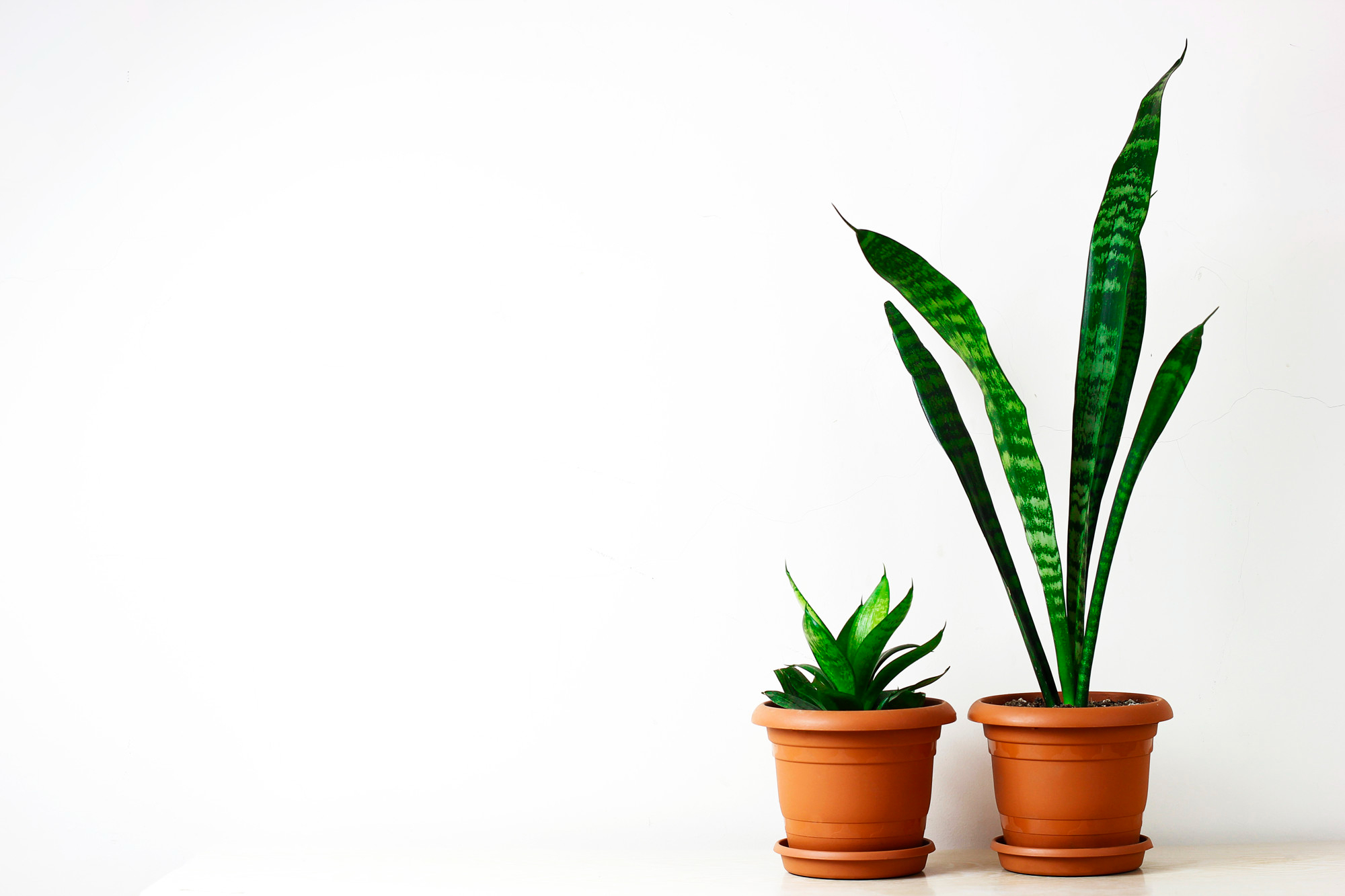
Care Tips:
- Place the snake plant in low to moderate light. It can also tolerate indirect sunlight.
- Water sparingly, allowing the soil to dry out between waterings. Overwatering can cause root rot.
The snake plant is known for its ability to filter toxins like formaldehyde, making it a great plant for improving indoor air quality. To learn more about how to care for the snake plant, visit Gardeners’ World’s guide.
2. ZZ Plant (Zamioculcas zamiifolia)
Key Features:
- Light Needs: Low light to moderate indirect light.
- Watering: Water only when the top few inches of soil are dry.
- Size: Can grow up to 3 feet tall.
The ZZ plant is another tough houseplant that thrives in low-light conditions. It has glossy, deep green leaves that grow in a rosette pattern. The ZZ plant is drought-tolerant, and its thick, waxy leaves can store water, making it extremely low maintenance.
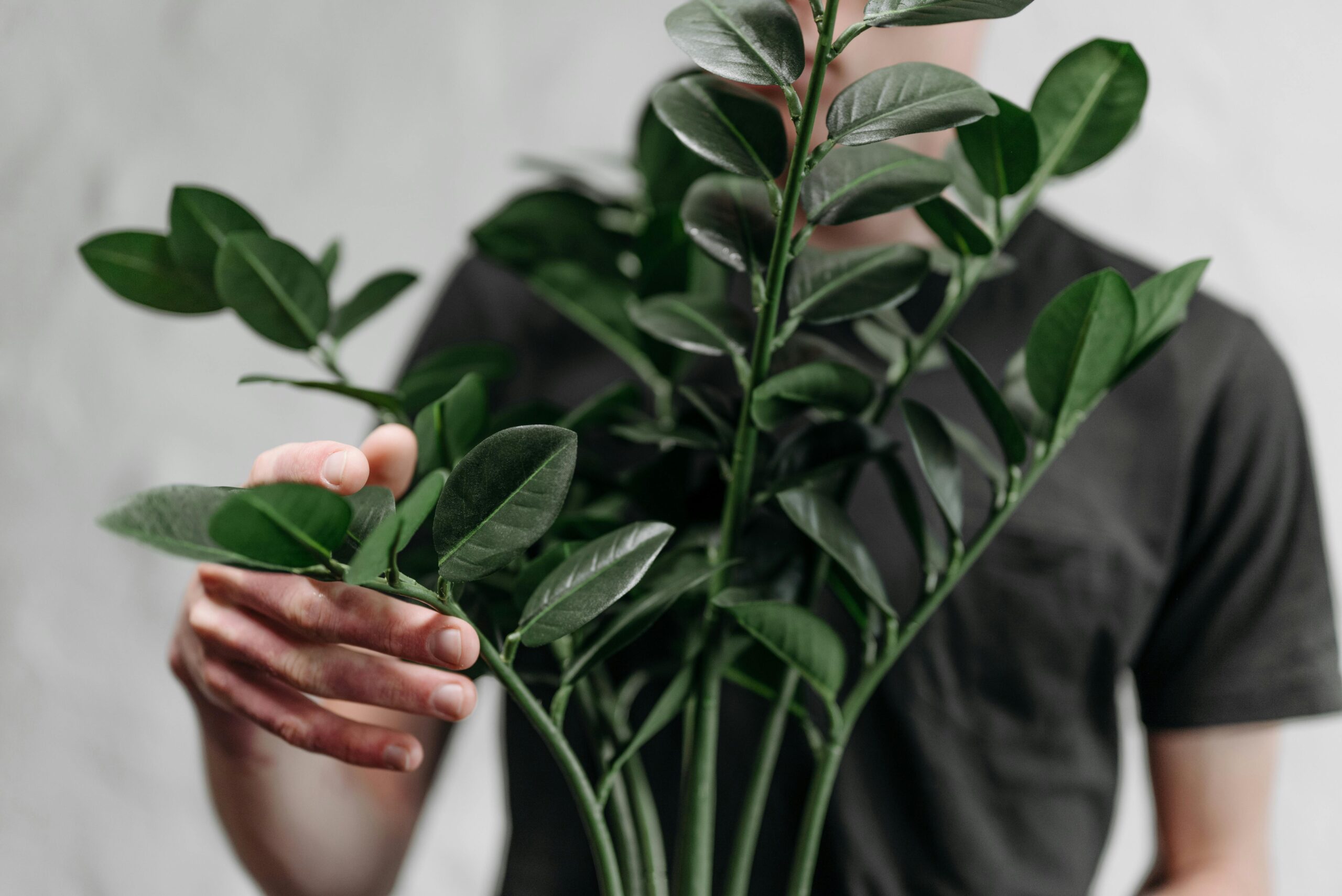
Care Tips:
- Place the ZZ plant in low to moderate light conditions, away from direct sunlight.
- Water sparingly, and ensure that the pot has proper drainage.
The ZZ plant is also known for its air-purifying qualities. It’s perfect for darker corners of your home or office where other plants may not thrive. For more details on caring for the ZZ plant, visit The Spruce’s care guide.
3. Pothos (Epipremnum aureum)
Key Features:
- Light Needs: Low to bright indirect light.
- Watering: Water when the top inch of soil is dry.
- Size: Can grow up to 10 feet long as a trailing plant.
Pothos is a popular choice for hanging baskets and shelves due to its trailing vines and heart-shaped leaves. It’s incredibly easy to care for and can thrive in a variety of lighting conditions, including low light. Pothos can also be grown in water, making it a versatile and low-maintenance option.
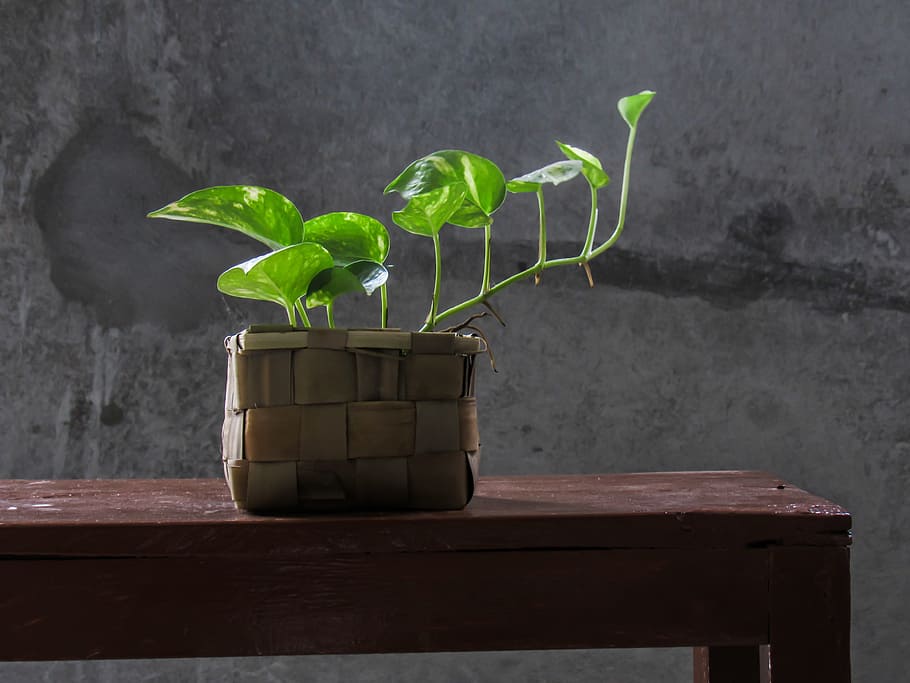
Care Tips:
- Place Pothos in low to bright indirect light, avoiding direct sunlight.
- Water when the soil feels dry. Overwatering can cause the leaves to turn yellow.
Pothos is an excellent air purifier and can help remove toxins like formaldehyde and xylene from the air. For more information, visit Better Homes & Gardens’ guide.
4. Peace Lily (Spathiphyllum spp.)
Key Features:
- Light Needs: Low to moderate light.
- Watering: Keep soil consistently moist but not soggy.
- Size: Typically grows 1-4 feet tall.
Peace lilies are known for their beautiful white flowers and dark green leaves. They are one of the few flowering plants that thrive in low light, making them perfect for shaded rooms or offices. Peace lilies are also known to filter toxins from the air, adding both beauty and health benefits to your space.
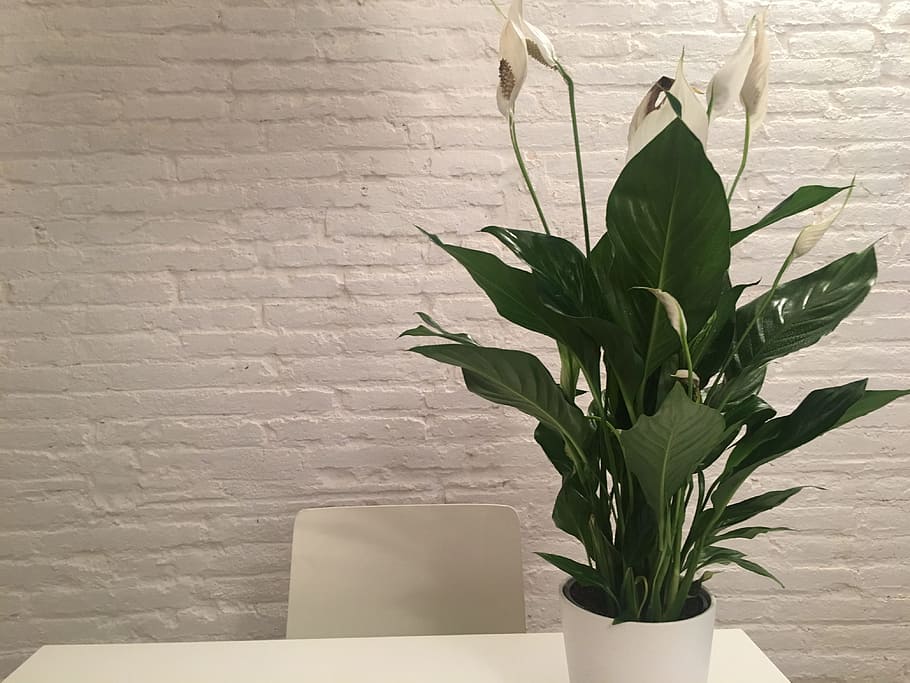
Care Tips:
- Place peace lilies in low to moderate light. Avoid direct sunlight, which can scorch the leaves.
- Keep the soil consistently moist, but don’t let it become waterlogged.
Peace lilies can also indicate when they need water, as their leaves will droop. For a detailed care guide, visit Houseplant Central’s website.
5. Chinese Evergreen (Aglaonema spp.)
Key Features:
- Light Needs: Low to moderate indirect light.
- Watering: Water when the top inch of soil is dry.
- Size: Typically grows 1-3 feet tall.
Chinese evergreens are a classic choice for low-light indoor spaces. They come in a variety of leaf patterns and colors, including green, silver, and red. Their ability to tolerate low light and humidity makes them a popular option for offices and rooms with limited sunlight.
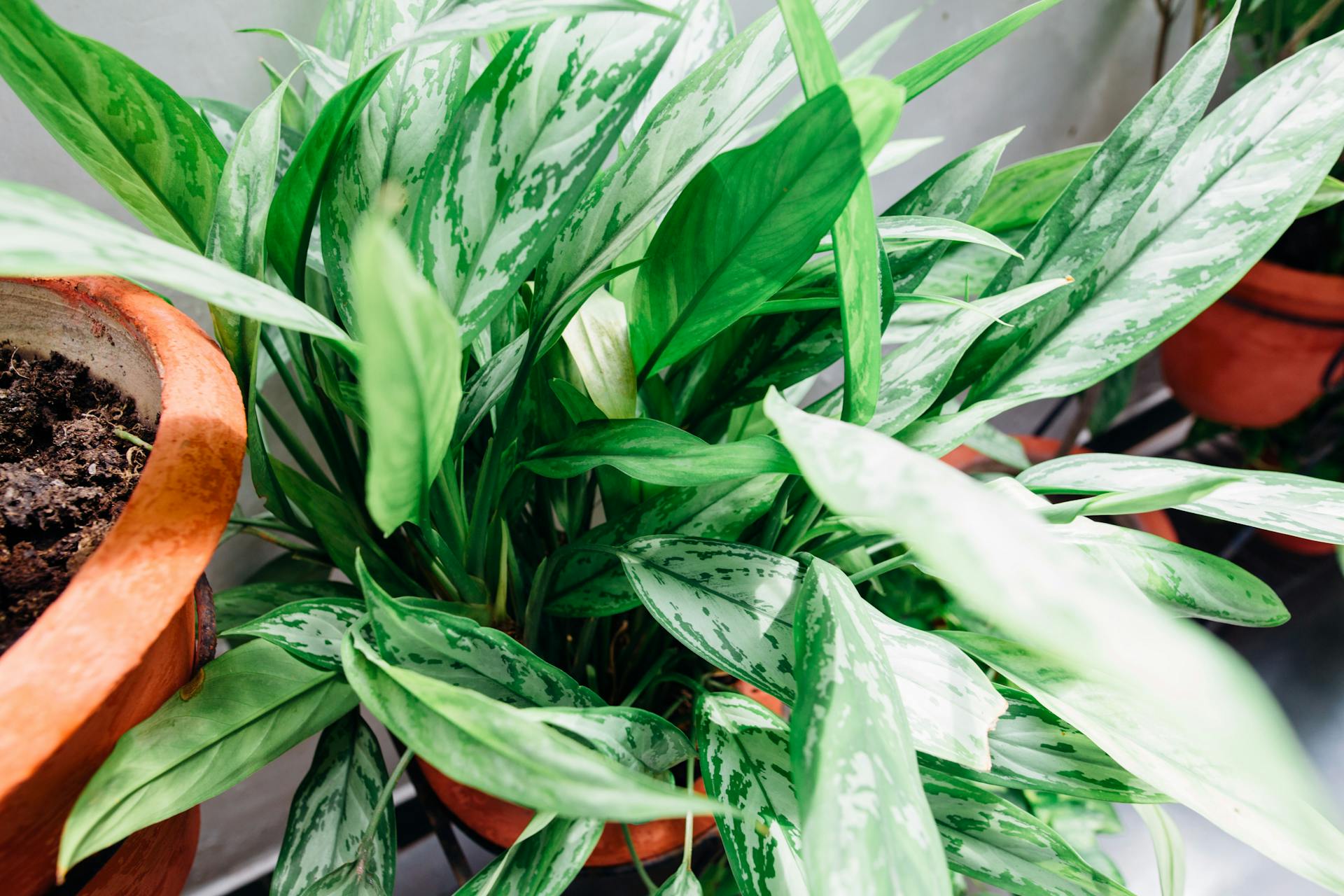
Care Tips:
- Place Chinese evergreens in low to moderate light conditions.
- Water when the top inch of soil is dry, and avoid overwatering.
Chinese evergreens are not only beautiful but also help remove pollutants from the air. Learn more about caring for Chinese evergreens at The Spruce’s guide.
6. Cast Iron Plant (Aspidistra elatior)
Key Features:
- Light Needs: Low light to shade.
- Watering: Allow the soil to dry out between waterings.
- Size: Typically grows 1-2 feet tall.
The cast iron plant lives up to its name as it’s nearly indestructible and can tolerate neglect. With dark green, glossy leaves, it’s a great plant for areas with little to no natural light, such as hallways or bathrooms.
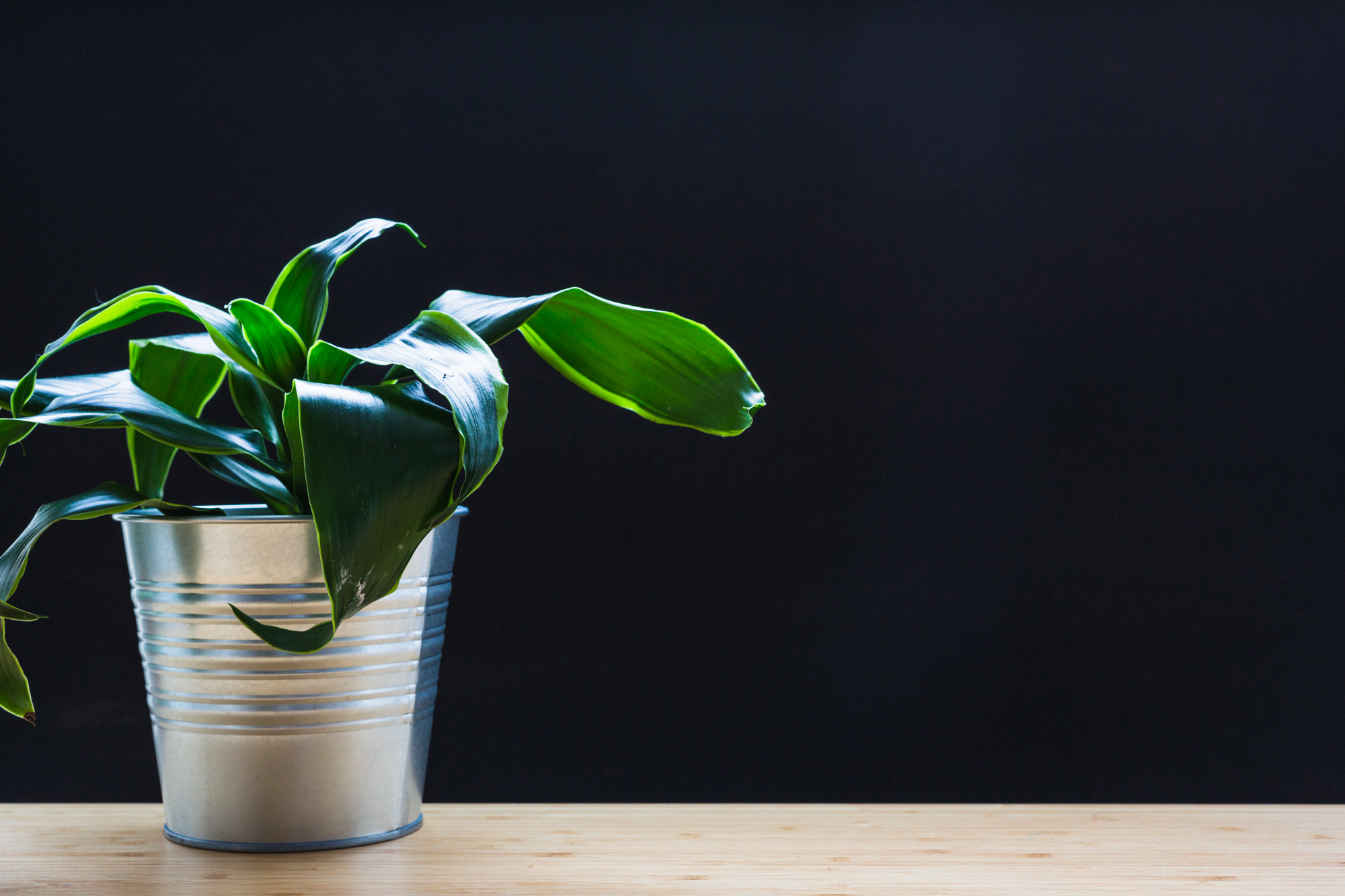
Care Tips:
- Place in low light or shade. It can also tolerate artificial lighting.
- Water sparingly and allow the soil to dry out between waterings.
The cast iron plant is perfect for those who may not have a green thumb but still want to enjoy the benefits of having plants at home. For more information, visit Gardening Know How’s page on Cast Iron Plant.
7. Spider Plant (Chlorophytum comosum)
Key Features:
- Light Needs: Low to bright indirect light.
- Watering: Keep soil evenly moist.
- Size: Grows 1-2 feet tall and wide.
The spider plant is a popular, low-maintenance houseplant with arching green and white leaves. It’s ideal for hanging baskets or as a tabletop plant and can adapt to various lighting conditions, making it a versatile option for any room.
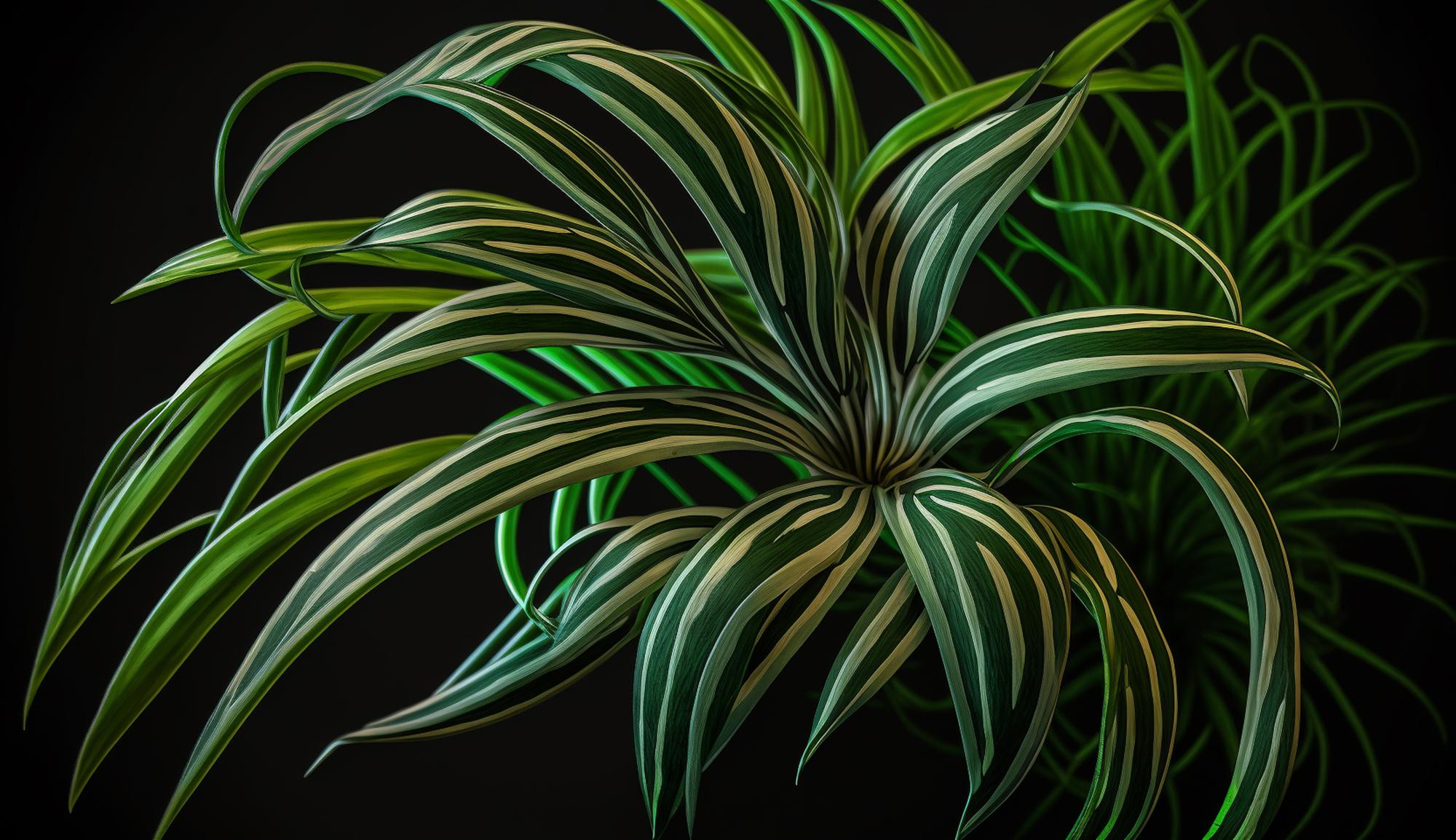
Care Tips:
- Place in low to bright indirect light.
- Water regularly, keeping the soil moist but not soggy.
Spider plants produce “pups” or small plantlets that can be propagated easily. This plant is also known for its air-purifying properties. For more details, check out Gardener’s Path’s guide.
8. Parlor Palm (Chamaedorea elegans)
Key Features:
- Light Needs: Low to moderate indirect light.
- Watering: Water when the top 1-2 inches of soil are dry.
- Size: Can grow up to 4 feet tall.
Parlor palms are small, elegant palms that thrive in low light and add a tropical feel to your home. They have delicate, arching fronds that bring a touch of greenery to dimly lit spaces.
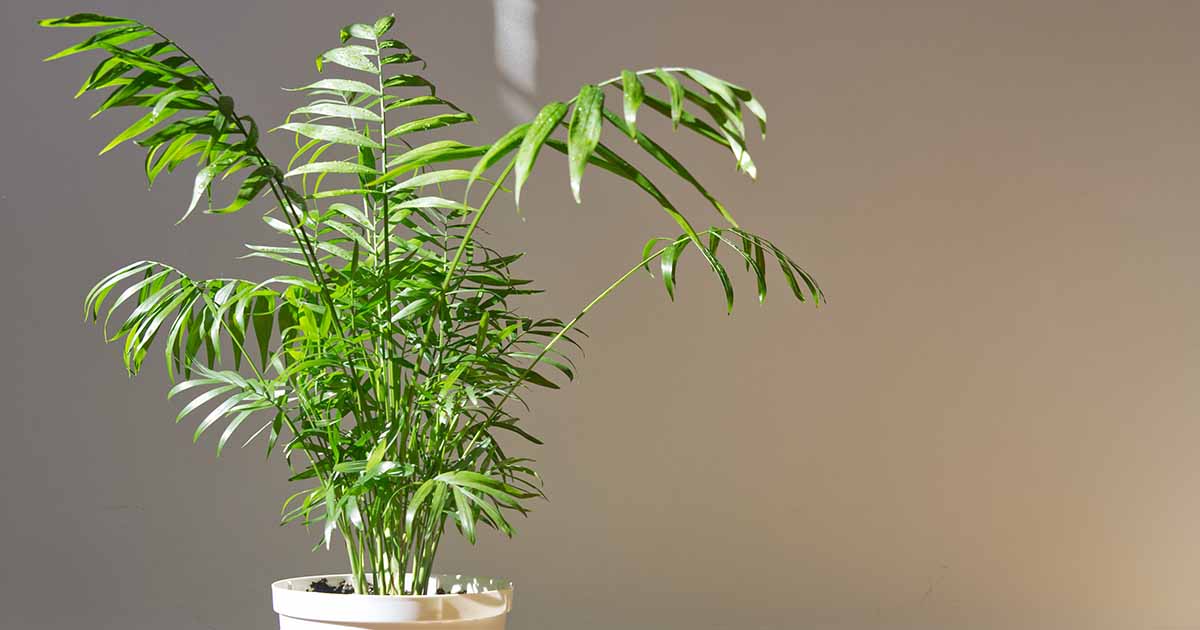
Care Tips:
- Place in low to moderate indirect light.
- Water when the top 1-2 inches of soil are dry. Avoid overwatering.
For more information on caring for parlor palms, visit The Spruce’s guide.
9. Philodendron (Philodendron spp.)
Key Features:
- Light Needs: Low to bright indirect light.
- Watering: Water when the top inch of soil is dry.
- Size: Can grow up to 10 feet long as a trailing or climbing plant.
Philodendrons are easy-to-care-for plants that can thrive in various lighting conditions. Their heart-shaped leaves and trailing growth habit make them perfect for shelves or hanging baskets.
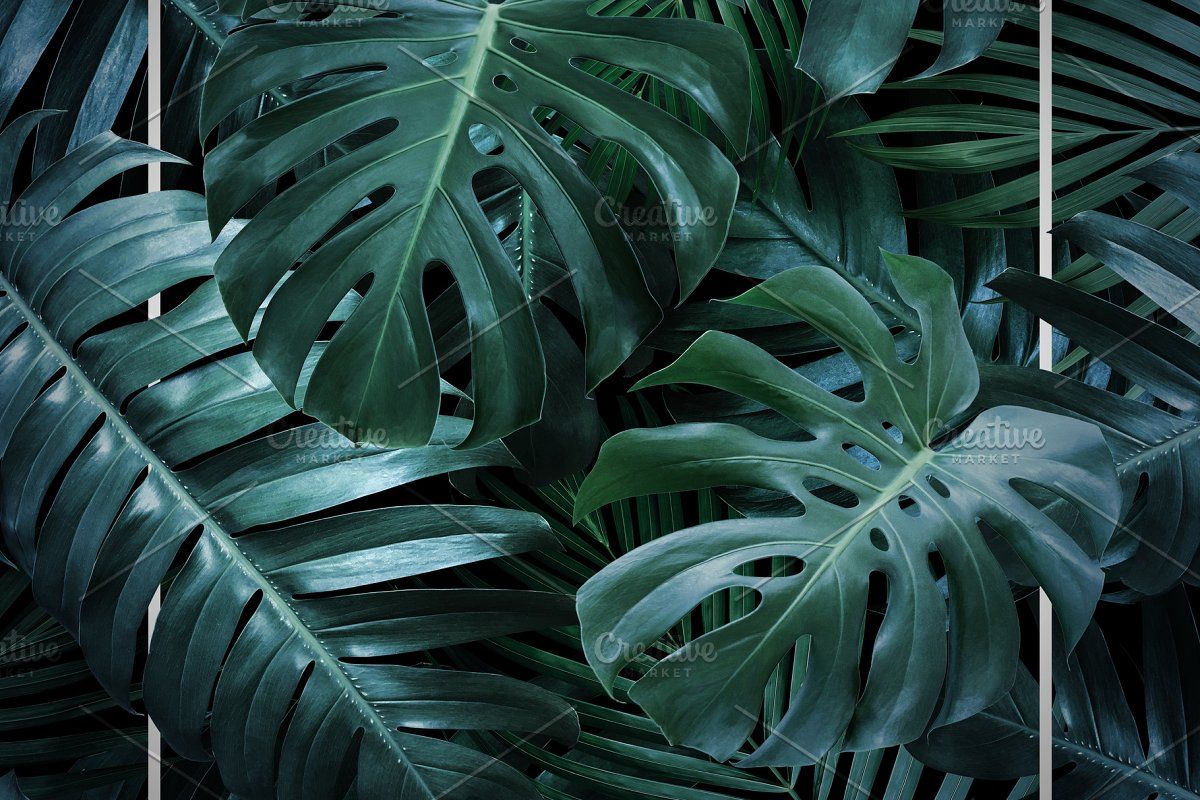
Care Tips:
- Place in low to bright indirect light, away from direct sunlight.
- Water when the top inch of soil is dry.
Philodendrons are also excellent air purifiers and can help reduce indoor pollutants. For more on Philodendron care, visit Better Homes & Gardens’ guide.
Final Thoughts
Low-light indoor plants are a great way to add greenery to your home without needing direct sunlight. Whether you’re a beginner or an experienced plant lover, these nine easy-care plants can thrive in your space and bring a bit of nature indoors. Remember to choose plants that suit your specific room conditions and personal preferences.
Ready to start your indoor garden? Visit your local nursery or explore online stores like The Sill or Bloomscape for a wide selection of low-light indoor plants.
What are your favorite low-light plants? Share your experiences in the comments below!
FAQs: 9 Easy Low-Light Indoor Plants
Indoor plants can bring life, beauty, and a calming presence to any home, even in spaces that don’t get a lot of natural light. But choosing the right plants, understanding their care needs, and keeping them healthy can raise a lot of questions, especially for beginners. To help you navigate the world of low-light indoor plants, here are 10 frequently asked questions with detailed answers.
1. What Are the Best Low-Light Indoor Plants for Beginners?
For beginners, it’s best to choose low-light indoor plants that are hardy, low-maintenance, and forgiving of occasional neglect. Here are some of the top options:
- Snake Plant (Sansevieria trifasciata): The snake plant is nearly impossible to kill and can tolerate low light, irregular watering, and a variety of indoor conditions.
- ZZ Plant (Zamioculcas zamiifolia): This plant is known for its thick, waxy leaves that store water, making it drought-tolerant and easy to care for.
- Pothos (Epipremnum aureum): Pothos is a versatile plant that can be grown in soil or water and requires very little attention, making it perfect for beginners.
2. How Do I Know If My Plant Is Getting Enough Light?
Low-light plants typically thrive in indirect or filtered light. However, it can be challenging to determine if your plant is getting the right amount. Here are a few signs to look for:
- Healthy, Steady Growth: If your plant is growing at a steady rate and its leaves are vibrant, it’s likely receiving the right amount of light.
- Pale or Yellow Leaves: If your plant’s leaves are turning pale or yellow, it may be receiving too much direct sunlight. Move it to a spot with less intense light.
- Leggy Growth: If your plant is stretching toward the light source (becoming “leggy”), it may not be getting enough light. Consider moving it closer to a window or supplementing with a grow light.
3. How Often Should I Water Low-Light Indoor Plants?
The watering needs of low-light indoor plants vary depending on the specific plant and the environmental conditions. Generally, low-light plants require less frequent watering than sun-loving plants. Here are some general guidelines:
- Snake Plant, ZZ Plant, and Cast Iron Plant: These plants prefer their soil to dry out completely between waterings. Water once every 2-3 weeks, depending on the temperature and humidity.
- Peace Lily, Pothos, and Philodendron: These plants prefer evenly moist soil. Water when the top inch of soil feels dry.
4. Can Low-Light Indoor Plants Survive Without Natural Sunlight?
Yes, many low-light indoor plants can survive and even thrive under artificial lighting. While they do best in natural indirect light, fluorescent and LED grow lights can provide the necessary light spectrum for photosynthesis. Here’s what you need to know:
- Fluorescent Lights: These provide a broad spectrum of light and are suitable for low-light plants like Snake Plants and ZZ Plants.
- LED Grow Lights: These lights are energy-efficient and can be tailored to emit the exact light spectrum your plants need. Look for “full-spectrum” LED grow lights for the best results.
5. What Are the Best Places to Keep Low-Light Indoor Plants in My Home?
Low-light indoor plants can thrive in various spots throughout your home. Here are some ideal locations:
- Bathrooms: The higher humidity in bathrooms is perfect for plants like Peace Lilies and Ferns, which thrive in moist environments.
- Bedrooms: Choose air-purifying plants like Snake Plants or Spider Plants to keep in your bedroom. These plants release oxygen at night, promoting better sleep.
- Hallways and Corners: Low-light plants like Cast Iron Plant or ZZ Plant are ideal for dim hallways or corners that don’t get much light.
- Office Spaces: Place Pothos or Parlor Palm on your desk to add greenery to your workspace, even if it’s far from a window.
6. How Can I Prevent Overwatering My Low-Light Indoor Plants?
Overwatering is one of the most common mistakes when caring for low-light indoor plants. Here’s how to prevent it:
- Check the Soil: Always check the top inch of soil before watering. If it feels dry, it’s time to water. If it’s still moist, wait a few more days.
- Use a Well-Draining Potting Mix: A potting mix with added perlite or sand allows water to drain more easily, preventing waterlogging.
- Choose the Right Pot: Use pots with drainage holes to allow excess water to escape. Avoid using decorative pots without proper drainage.
- Follow the “Soak and Dry” Method: Water thoroughly until water drains from the bottom, then let the soil dry out before watering again.
7. Do Low-Light Plants Need Fertilizer? If So, How Often?
Yes, low-light plants can benefit from occasional fertilizing to support healthy growth, even in lower light conditions. Use a balanced liquid houseplant fertilizer diluted to half strength. Fertilize during the active growing season (spring and summer) every 4-6 weeks. Avoid fertilizing in the fall and winter when growth naturally slows down.
Over-fertilizing can harm your plants, so always follow the instructions on the fertilizer label.
8. Can Low-Light Plants Help Improve Indoor Air Quality?
Yes, many low-light indoor plants are excellent natural air purifiers. Studies by NASA have shown that certain houseplants can help remove toxins like formaldehyde, benzene, and xylene from the air. Some of the best air-purifying low-light plants include:
- Snake Plant: Known for its ability to filter formaldehyde and benzene.
- Peace Lily: Removes pollutants like benzene and formaldehyde while also increasing humidity.
- Spider Plant: Effective at removing carbon monoxide and xylene.
9. Are Low-Light Plants Safe for Pets?
Some low-light plants are toxic to pets, so it’s important to choose pet-safe options if you have cats or dogs. Here’s a quick guide:
- Pet-Friendly Low-Light Plants: Spider Plant, Boston Fern, Parlor Palm.
- Plants to Avoid: Snake Plant, ZZ Plant, and Peace Lily (all toxic if ingested).
10. What Should I Do If My Low-Light Plant’s Leaves Start Turning Yellow?
Yellowing leaves can be caused by several factors, including overwatering, underwatering, or insufficient light. Here’s what to do:
- Check the Soil Moisture: If the soil is soggy, it may be due to overwatering. Allow the soil to dry out before watering again.
- Assess Light Conditions: If your plant is in a very dark spot, consider moving it closer to a source of indirect light.
- Look for Pests: Inspect the plant for signs of pests like spider mites or aphids, which can cause leaf discoloration.
